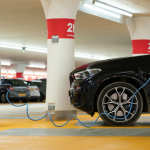One of the biggest barriers to widespread adoption of battery electric vehicles (BEVs) is their limited range. Most passenger BEVs can travel around 250 miles before needing to recharge, compared to an average range of around 360 miles for a traditional car. And while EV range is improving constantly, it’s still an issue for those considering making the switch.
So logically, that range issue would probably make the shift to zero-emission long-haul trucks even harder than the switch for passenger cars, right?
Well, maybe not.
Whether electric heavy-duty rigs or hydrogen-powered alternatives, the medium- and long-haul industry is making promising strides toward adoption of new transportation options.
Current State of Fleets
Right now, electric- and hydrogen-powered fleets are in limited supply.
According to the 2021 State of Sustainable Fleets Report, almost all leading original equipment manufacturers (OEMs) in the medium- and heavy-duty markets have announced plans to commercialize at least one BEV. Despite this commitment, models aren’t widely accessible yet. Most OEMs plan to make their electric vehicles available by next year at the earliest.
Freightliner, a subsidiary of Daimler, currently has a demo fleet of 40 electric trucks on the road, with commercially-available models coming in 2022.
The eCascadia, Frieghtliner’s Class 8 semi-truck equivalent, has power ranging from 360 to 525 horsepower. It has a battery capacity of up to 475 kWh (almost five Tesla Model S sedans) and a range of 250 miles. While that range isn’t on par with traditionally-fueled semis, improvements in battery performance and cost are expected to even that playing field in coming years.
Volvo Trucks North America also has a Class 8 truck in development. The company has been taking orders for its VNR Electric tractor since the end of 2020.
The eCascadia, and electric big-rigs like it, will cost two to three times as much as a diesel equivalent, so fleet owners will need to consider total cost of ownership and return on investment to determine whether purchasing one is worth it yet.
When it comes to hydrogen, the potential for the long-haul industry is even greater than EV technology. Hydrogen trucks theoretically have greater ranges than their electric counterparts and they eliminate the need to dedicate cargo space to hold a large battery. A long-haul, Class 8 truck with a 100-kilogram hydrogen tank can also be fueled about 15 times faster than charging a 1-2 megawatt-hour battery needed on the battery-electric equivalent
However, the current deployment of hydrogen-powered vehicles is even more limited than EVs, with most models being in the early demonstration phase.
Newcomers like hydrogen vehicle manufacturer Hyzon, the mobility branch of fuel
cell producer Horizon, are offering three medium and three heavy-duty vehicles to be available in 2022. Existing companies Toyota and Hino are partnering to develop a Class 8 hydrogen vehicle, while Cummins and Navistar are doing the same.
Charging/Refueling Infrastructure
To accommodate the adoption of zero-emission fleets, electric charging and hydrogen fueling infrastructure will need to expand greatly.
According to the U.S. Department of Energy, there are currently 43,293 electric charging stations in the United States. Of these, fewer than 5,000 are fast charging stations – those that can provide a charge in an hour or less.
In terms of hydrogen stations, there are only 54 between the U.S. and Canada.
Compare that to the over 136,000 gas stations across the country and a clear disparity emerges.
That’s not to say that infrastructure growth isn’t coming, however.
In July, Volvo Truck, Daimler and the Traton Group, Volkswagen’s heavy-truck business, announced an agreement to build a network of high-performance public charging stations for electric heavy-duty long-haul trucks and buses around Europe. The groups plan to invest $593 million to install and operate 1,700 charging points along highway routes, with work planned to begin next year.
Just like with vehicle development, hydrogen fueling infrastructure currently lags behind EV charging availability. Individual steps forward are occurring, though, like the Canadian government pledging $2 million to install fueling stations in Victoria and Surrey and PowerTap Hydrogen Capital Corp. looking to expand the hydrogen refueling network in the U.S.
While full adoption of zero-emission hauling fleets is still a ways off, players in the field are making moves to bring that future closer one step at a time.






